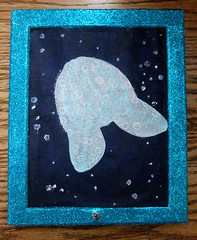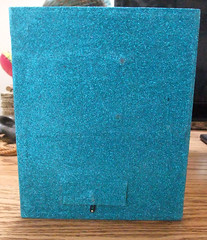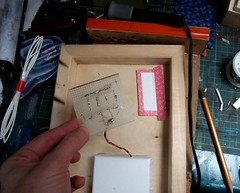
Compare, for instance with this:
The flashing is actually quite rapid. I took some artistic license here. Though it would be easy to use rapidly flashing LEDs to imitate the natural rythms of the bioluminescent comb jelly, I was concerned about the irriations/potential for inducing seizures of rapidly flashing lights.


I've been wanting to combine


I've simply combined a 9 Volt battery, with a and on/off switch on the positive rail, and a series/parallel LED array of these nifty, Diffused 5mm Slow Fade Flashing RGB LED. If you aren't used to thinking about electronics, this really is simple - trust me. If you can screw in a lightbulb, you can do this... with a little bit of practice. There are many LED calculators (like this one, for instance) which will tell you how to hook up arrays of LEDs. Basically, you need to make sure you have they with the right polarity (positive end to positive, negative to negative), you limit current (include appropriate resistors), and provide power. That's it. It is posible to get colour changing LEDs which you control with a microcontroller (the guts of a simple computer... basically a chip, which may have some bells and whistles), but since I just wanted the colours to change, these slow fade, self-flashing LEDs make everything simple. They only have the two leads (positive, and negative), so you can treat them like regular LEDs and they automatically fade and change colour. Because they are not manufactured completely uniformly, they do not synch up - which was precisely what I wanted.
I say 'transparent' when I mean 'translucent', but there you are. I plan some better images and video soon.









2 comments:
Amazing, amazing, and so nice to hear your voice describing the project!
Thanks very much! :D
Post a Comment